Have you ever looked at a building or monument and felt it is telling you a story — one that reveals more than any history book ever can? This happened to me recently when I spent a day in Tskaltubo, Georgia. The place is known as a town of sanatoriums or ‘Georgian Baden-Baden’ with its unique healing radon-carbonate mineral waters. 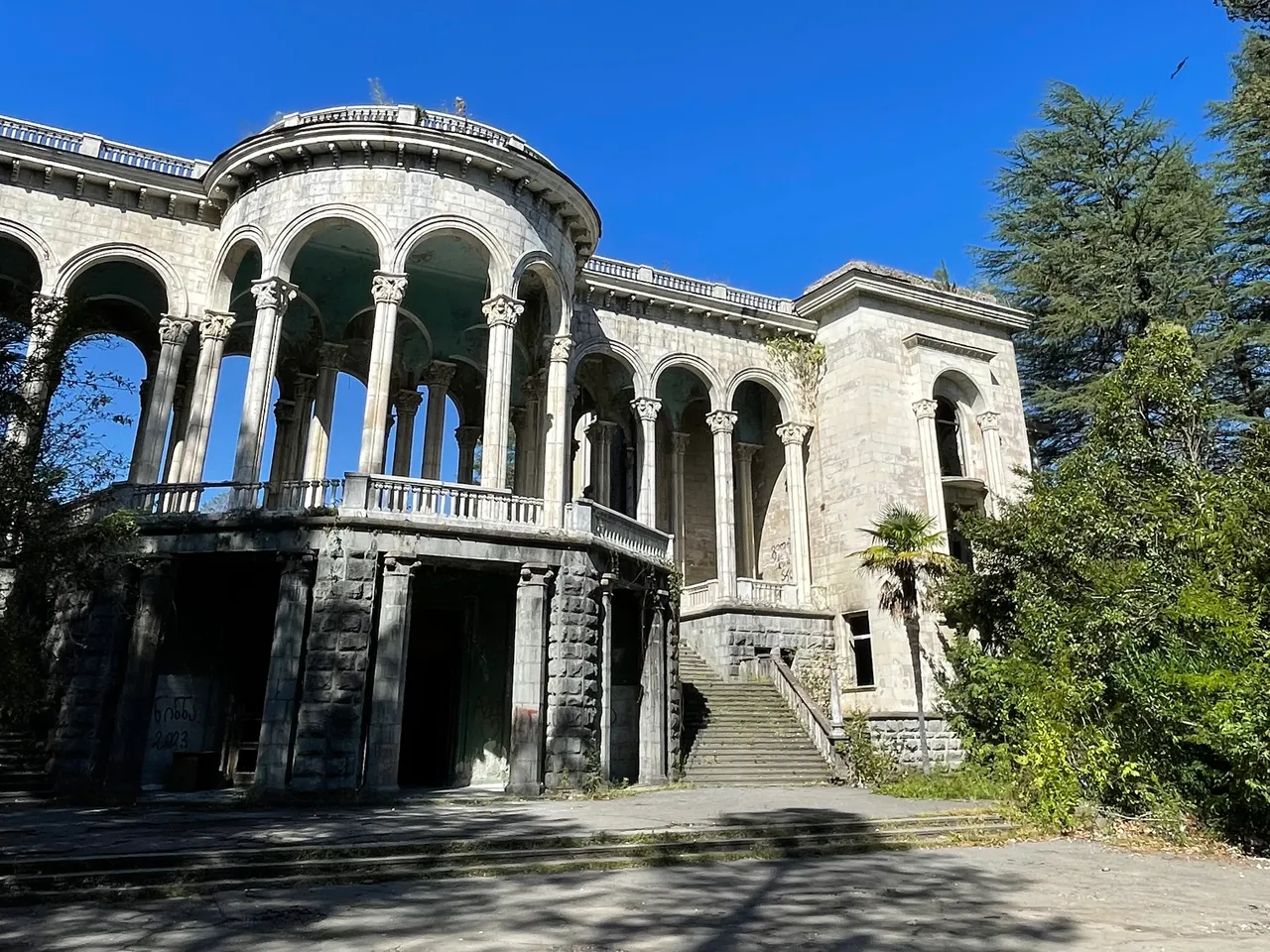 In this post, I’ll share the story of the town—and, indirectly, of the country—through the photos I took. As a little spoiler: beautiful, abandoned sanatorium buildings you’ll see below were flourishing not centuries ago, but only 35–40 years ago. So, what transformed Tskaltubo from one of the most famous Soviet-era SPA resorts into a town of abandoned beauty?
In this post, I’ll share the story of the town—and, indirectly, of the country—through the photos I took. As a little spoiler: beautiful, abandoned sanatorium buildings you’ll see below were flourishing not centuries ago, but only 35–40 years ago. So, what transformed Tskaltubo from one of the most famous Soviet-era SPA resorts into a town of abandoned beauty?
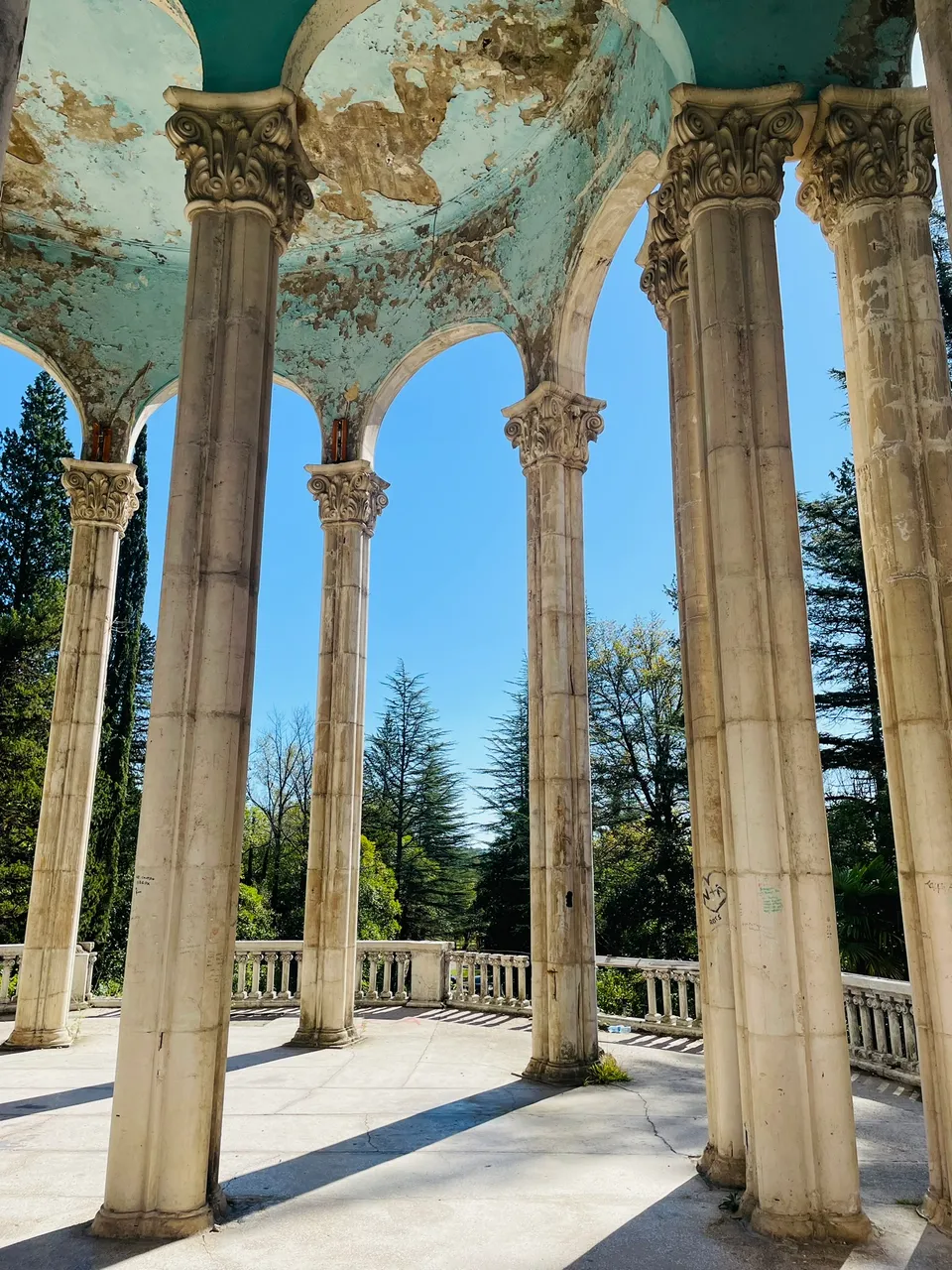
‘Waters of Immortality’
Historical records mention the healing mineral waters of Tskaltubo or ‘Waters of Immortality’ as early as the 13th centuries when Georgian kings visited the area to treat their wounds. In 1920, after the confirmation of the water’s therapeutic qualities by scientific chemical analysis, Tskaltubo was officially recognized as a balneological (therapeutic bath) resort.
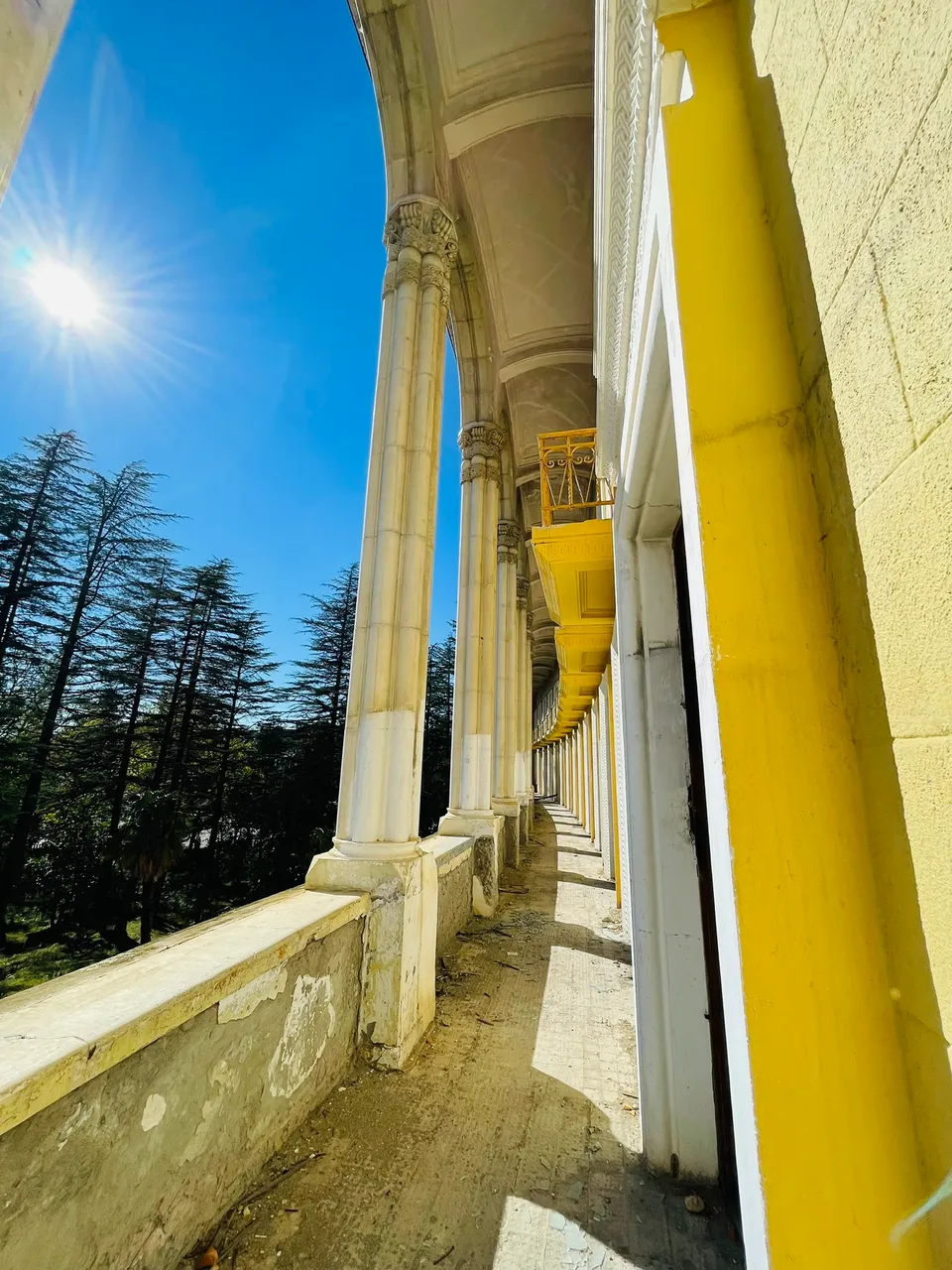 Tskaltubo’s golden era began in the 1950s after the visit of ‘big soviet boss’ of that time—Stalin. As local legends say, he received treatment with Tskaltubo’s mineral waters, which showed impressive results. Following that, he ordered the construction of sanatoriums for every important sector of Soviet industry. After that order, new sanatoriums sprang up like mushrooms after rain. It is believed that Tskaltubo was the Soviet response to the famous German Baden-Baden resort, and I share this belief as I’am standing and observing the remains of once-impressive grandiose buildings.
Tskaltubo’s golden era began in the 1950s after the visit of ‘big soviet boss’ of that time—Stalin. As local legends say, he received treatment with Tskaltubo’s mineral waters, which showed impressive results. Following that, he ordered the construction of sanatoriums for every important sector of Soviet industry. After that order, new sanatoriums sprang up like mushrooms after rain. It is believed that Tskaltubo was the Soviet response to the famous German Baden-Baden resort, and I share this belief as I’am standing and observing the remains of once-impressive grandiose buildings.

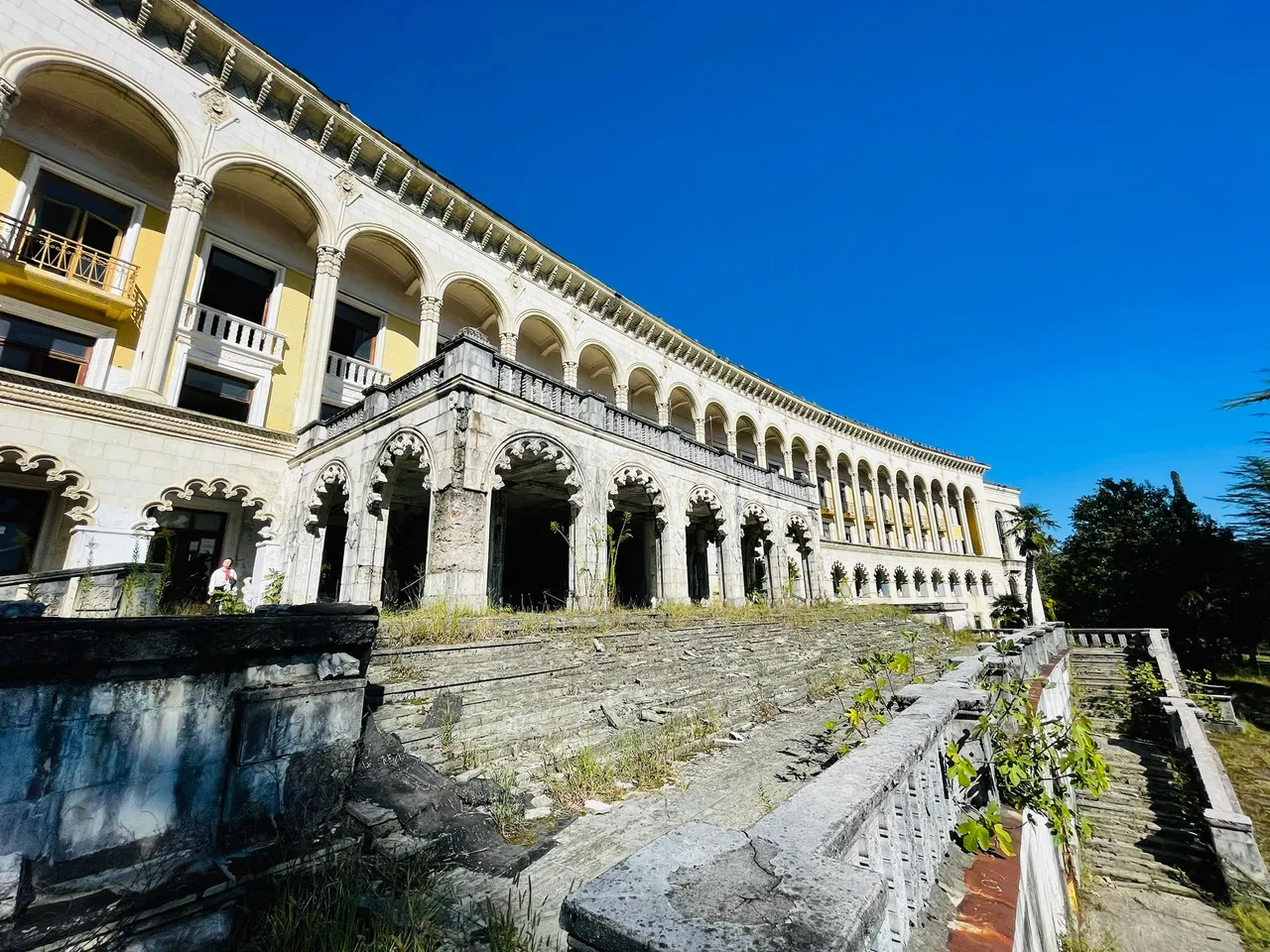
A Place to Heal, a Place to Brainwash
Over the years Tskaltubo got 22 sanatoriums that hosted people from various professions across the Soviet Union. The capacity of the resort was up to 125 000 visitors per year. There were sanatoriums for railway workers, mine workers, military personnel, and more. It’s worth mentioning that the sanatoriums were state-owned (as everything was in the Soviet era), and trips to them were mostly state-sponsored, making these places especially favorable for both effective treatment and spreading of Soviet propaganda. 
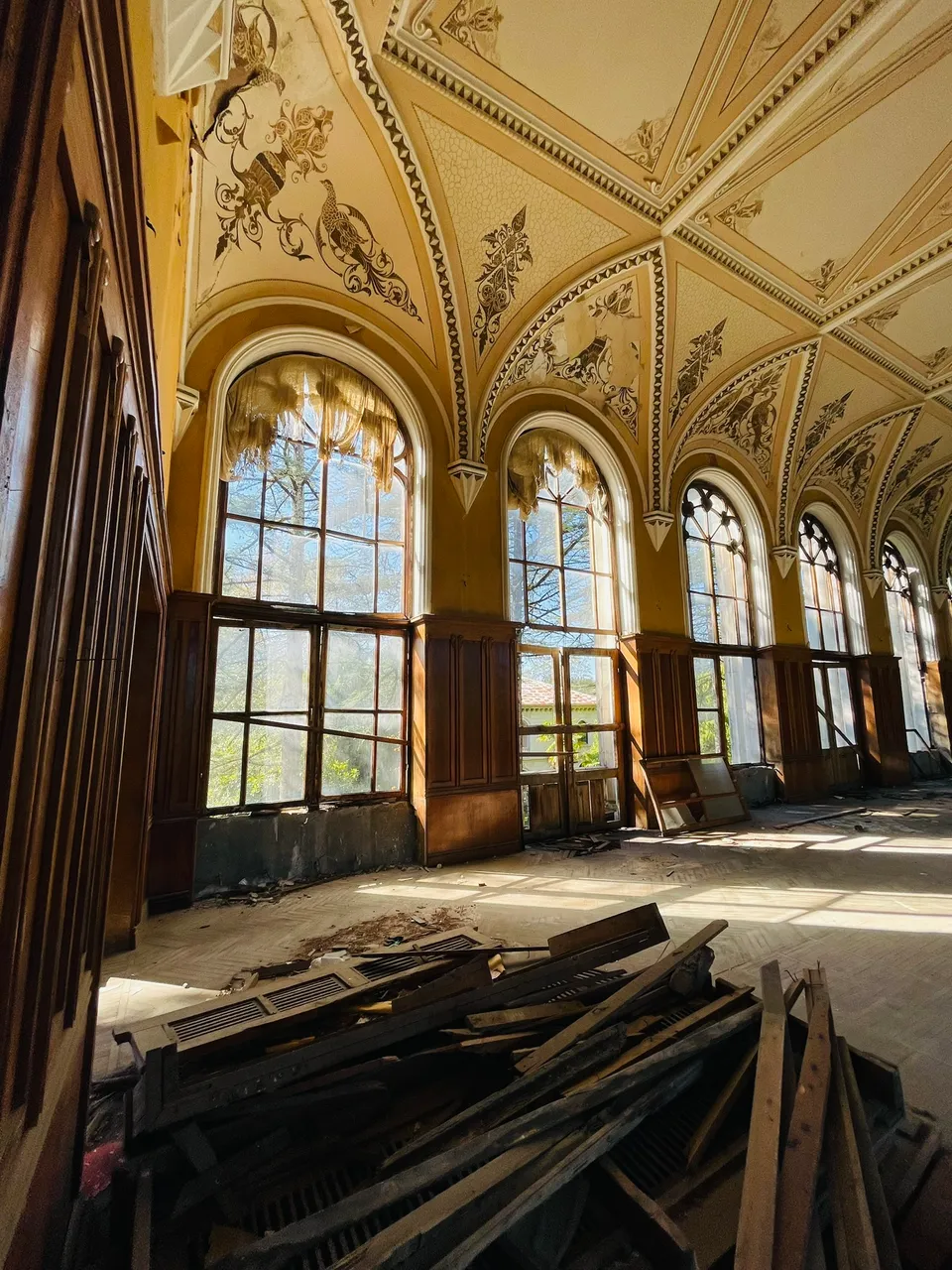
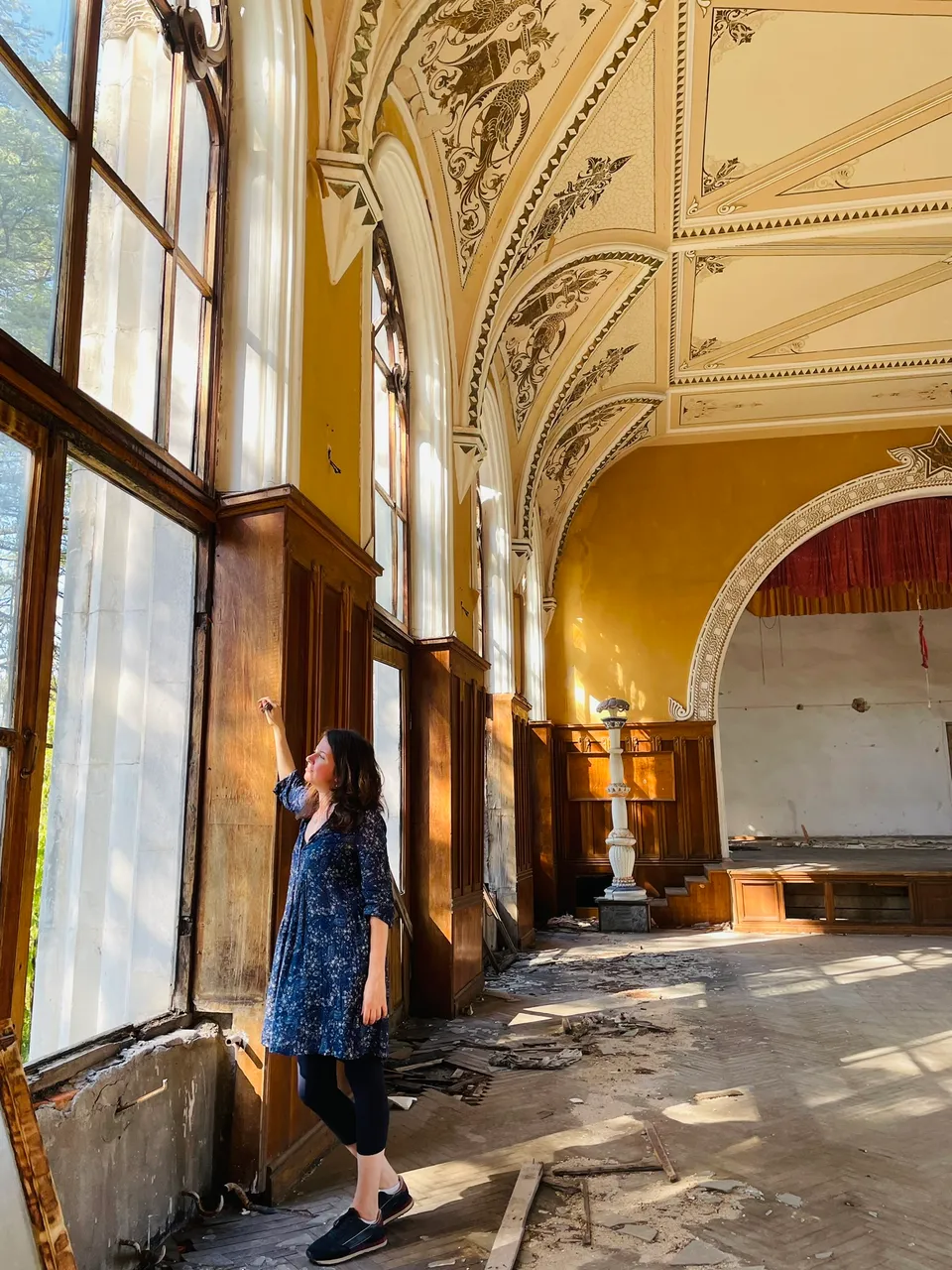 During this time of glory, Tskaltubo had its railway stop, where direct trains from different corners of the Soviet Union brought happy workers for health retreats. It was a perfect place to relax, heal from physical illnesses and strengthen immunity, including against ‘Western propaganda’:).
During this time of glory, Tskaltubo had its railway stop, where direct trains from different corners of the Soviet Union brought happy workers for health retreats. It was a perfect place to relax, heal from physical illnesses and strengthen immunity, including against ‘Western propaganda’:). 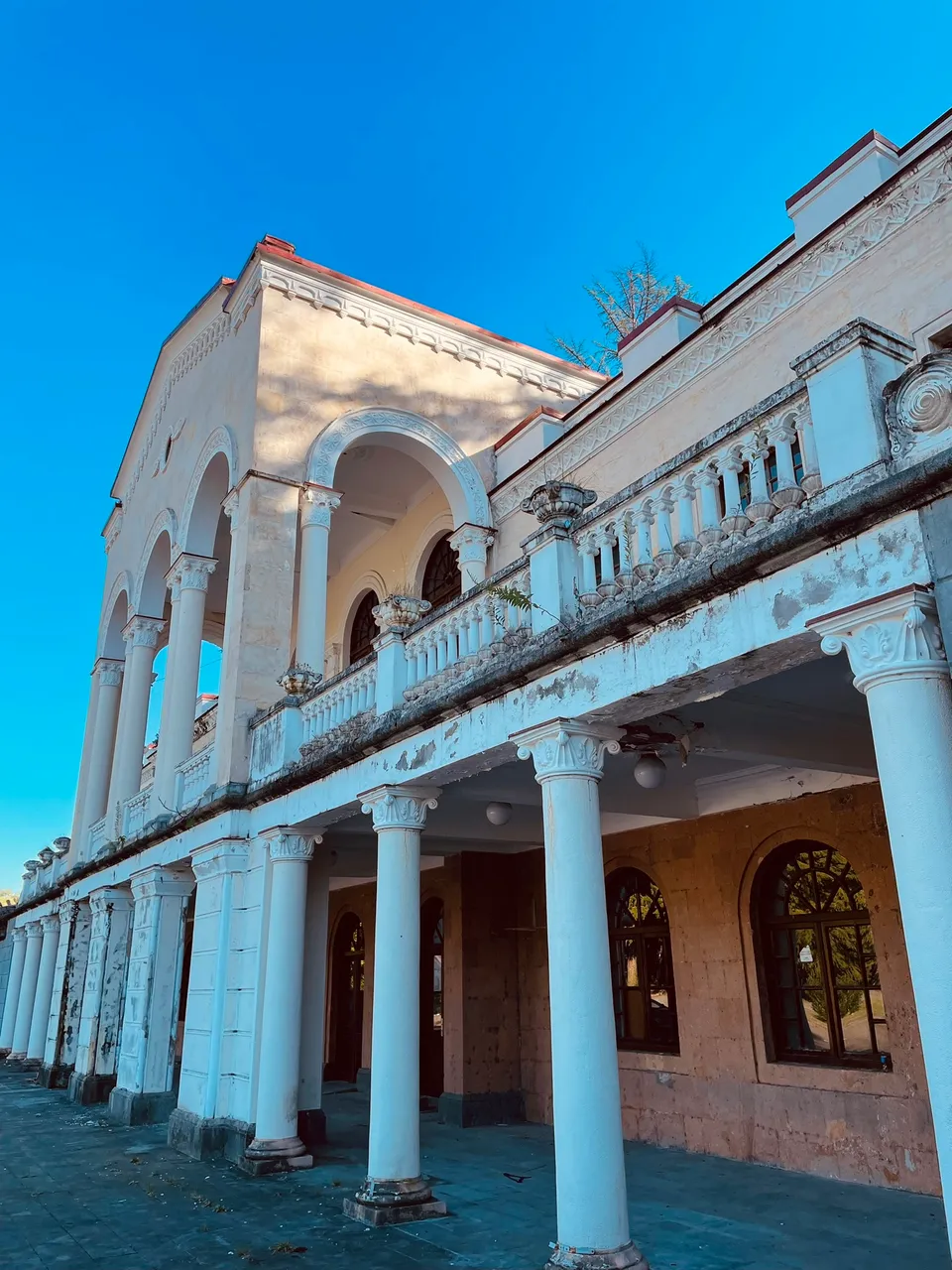 Here are modern photos of the once-beautiful Railway Station of Tskaltubo, which, as you can guess, no longer hosts any train.
Here are modern photos of the once-beautiful Railway Station of Tskaltubo, which, as you can guess, no longer hosts any train.
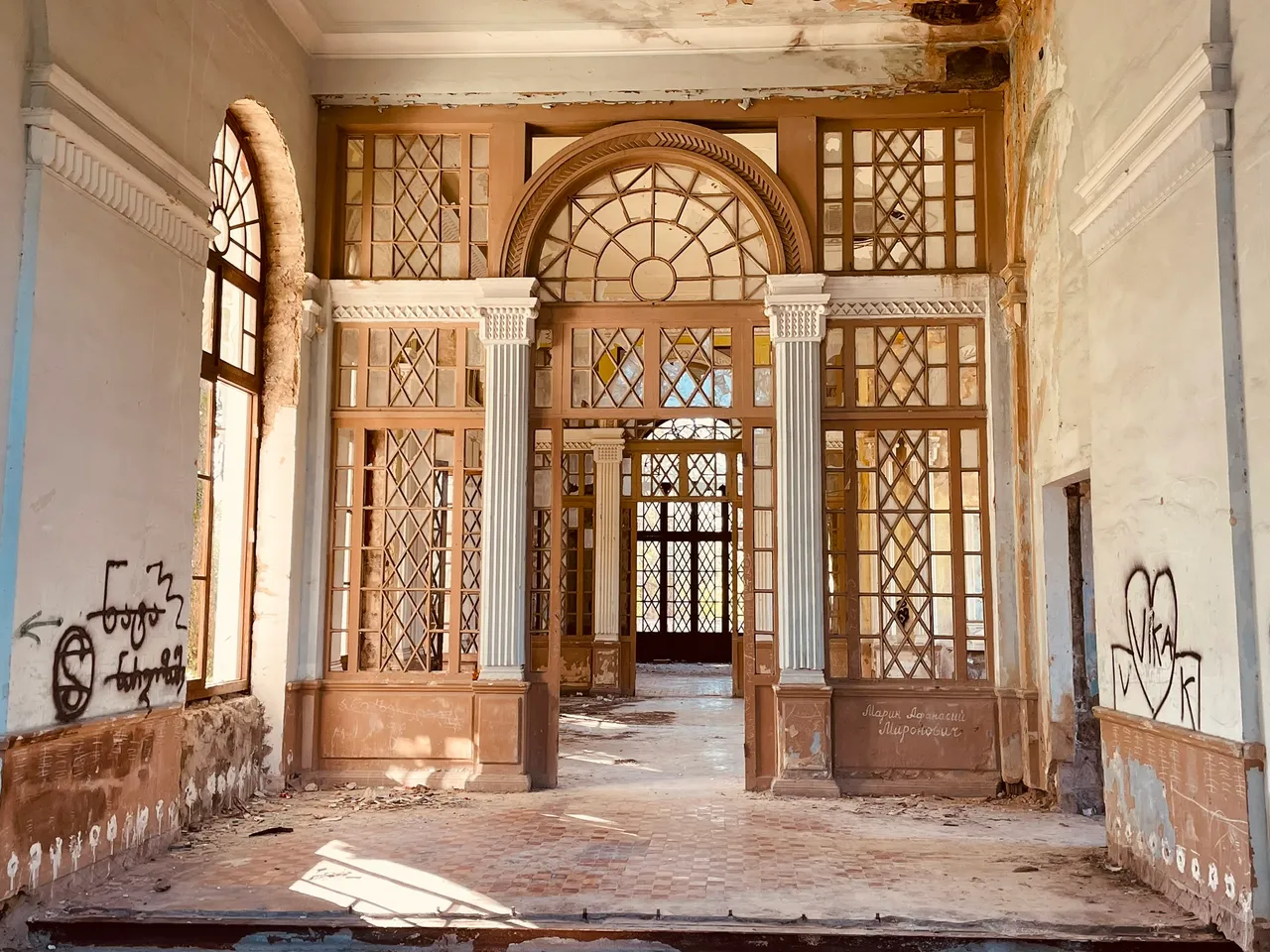
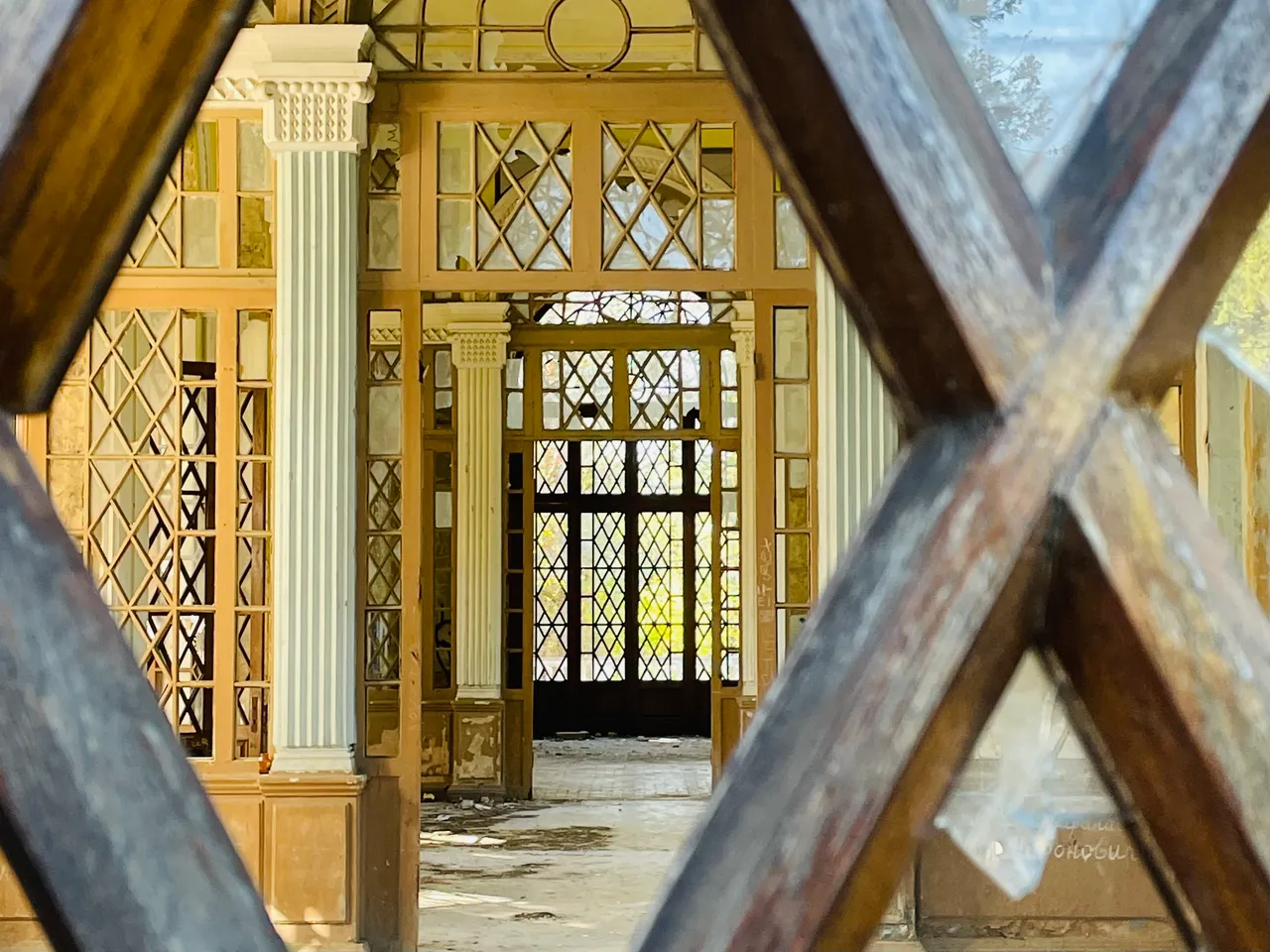
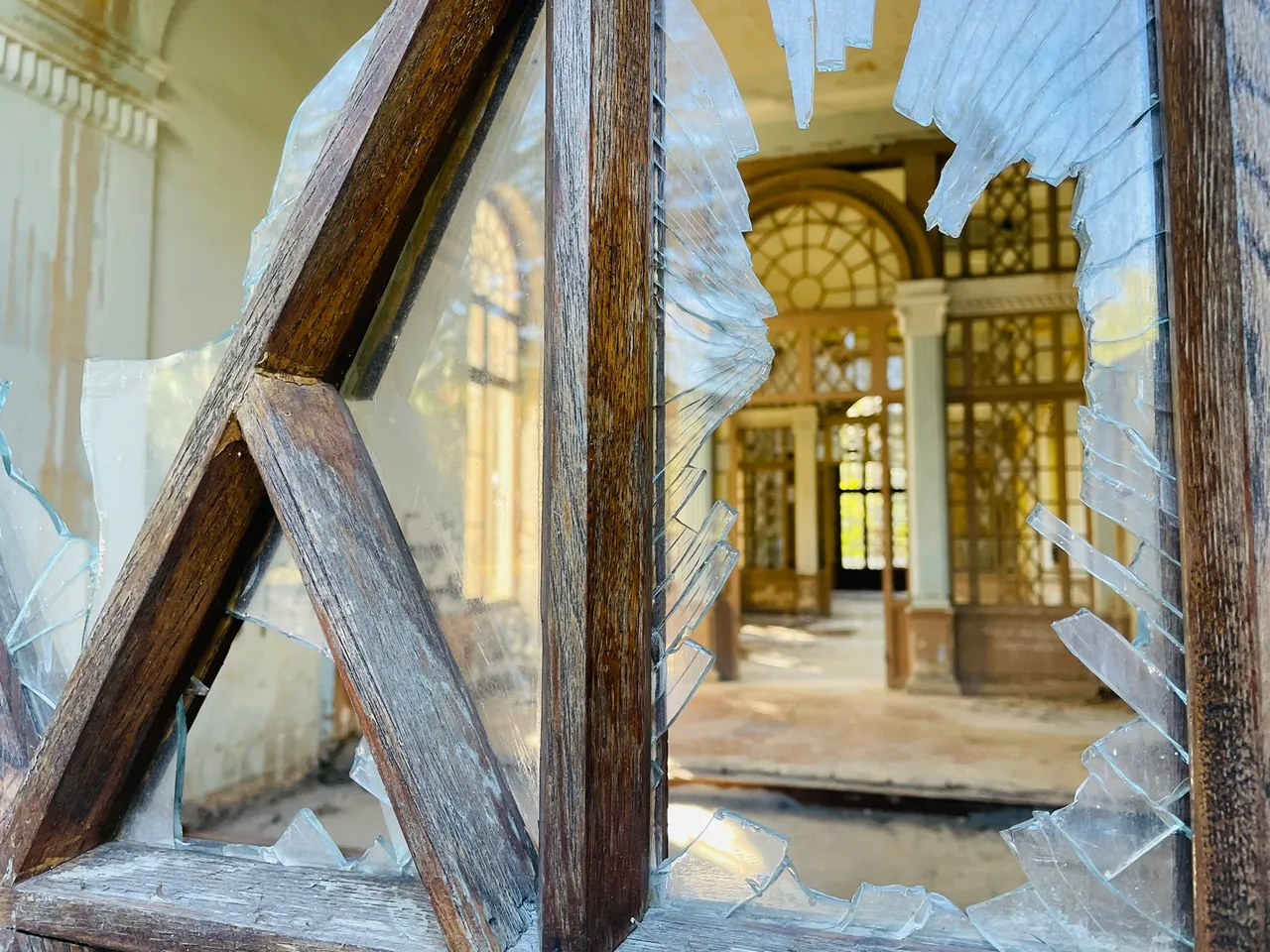
When Castles Become Shelters
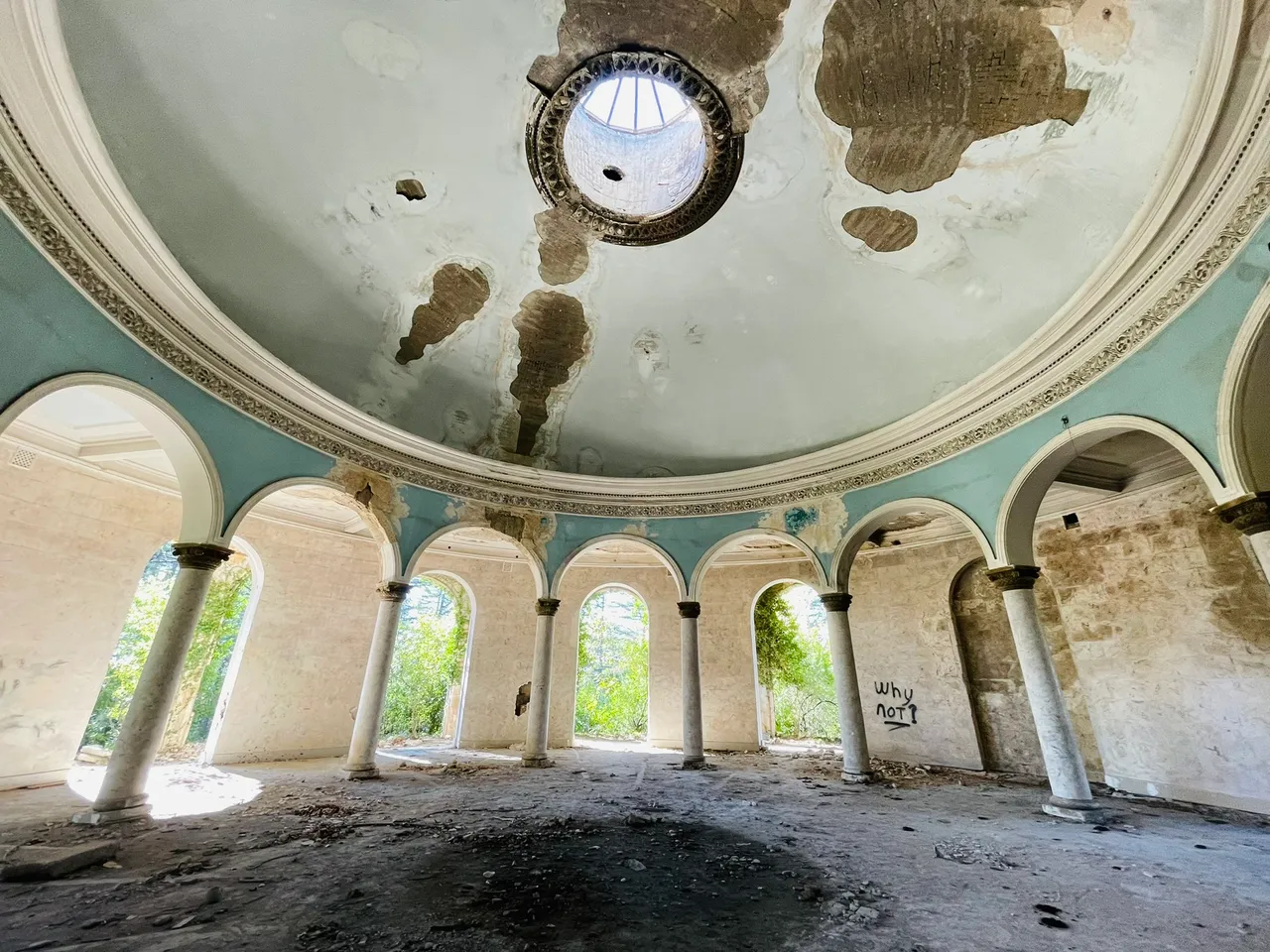 The Georgian Baden-Baden turned a new page in its history after the collapse of the Soviet Union, which was followed by a tragic civil war in Georgia and the bloody wars in its Abkhazia and Tskhinvali Region/South Ossetia regions in the early 1990s. The country faced extremely difficult times - most households were left without electricity, heating, and water, so did sanatoriums; mafia-type criminal gangs took over control; the country found itself in swamp. Additionally, up to 300,000 people were forced to leave their homes in Abkhazia and became internally displaced persons (IDPs). With no alternatives, IDPs were offered temporary accommodations in sanatoriums across the country, including those in Tskaltubo. This is how the glorious page of the SPA resort transformed into a chapter of sadness.
The Georgian Baden-Baden turned a new page in its history after the collapse of the Soviet Union, which was followed by a tragic civil war in Georgia and the bloody wars in its Abkhazia and Tskhinvali Region/South Ossetia regions in the early 1990s. The country faced extremely difficult times - most households were left without electricity, heating, and water, so did sanatoriums; mafia-type criminal gangs took over control; the country found itself in swamp. Additionally, up to 300,000 people were forced to leave their homes in Abkhazia and became internally displaced persons (IDPs). With no alternatives, IDPs were offered temporary accommodations in sanatoriums across the country, including those in Tskaltubo. This is how the glorious page of the SPA resort transformed into a chapter of sadness.
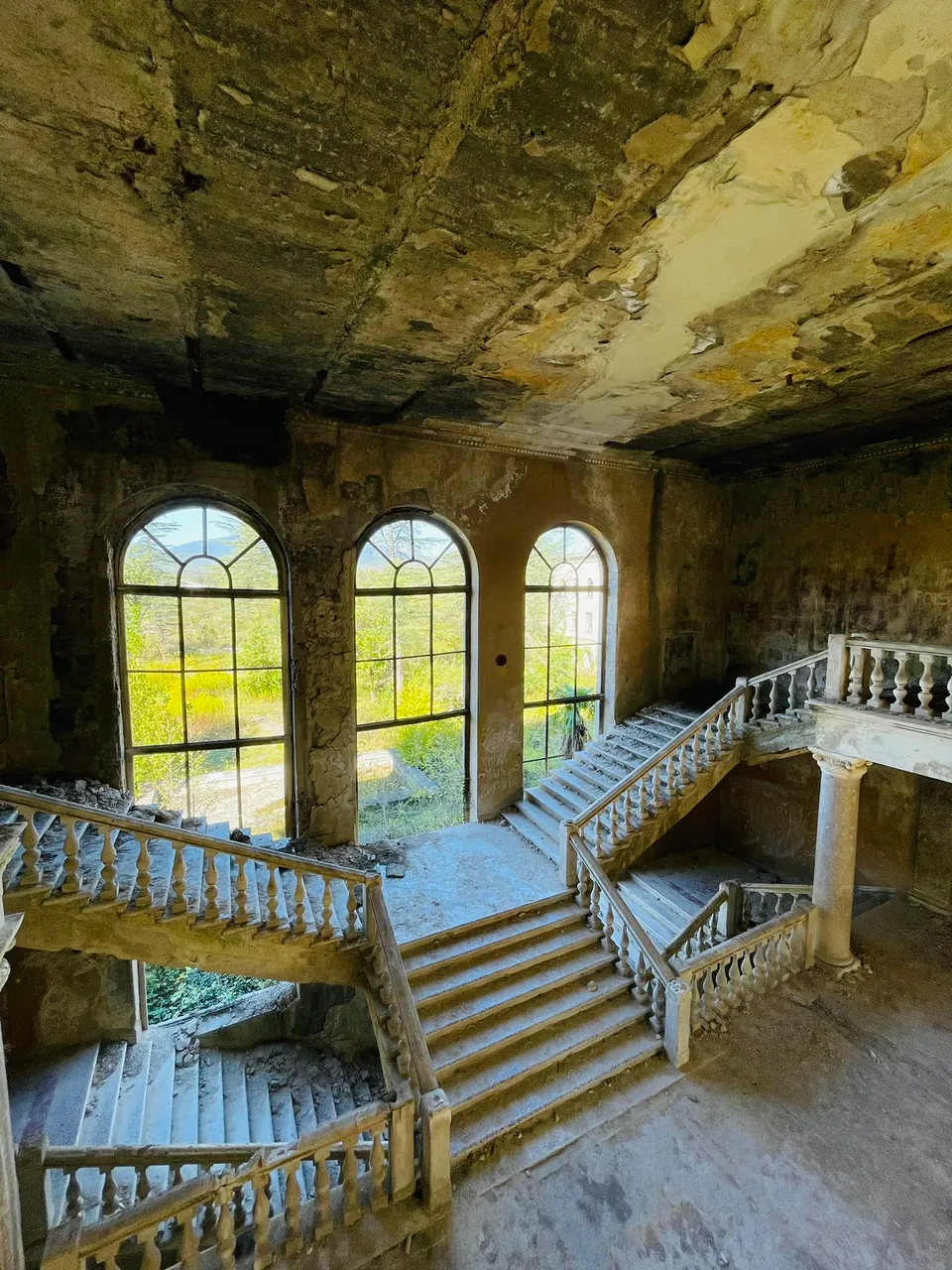 People found themselves in beautiful rooms in sanatoriums without electricity or heating. To keep their families warm in cold winters, they dismantled wooden doors and stair railings to make fires. Metal details were taken apart to be exchanged for coins or bread. Needless to say, under such circumstances, sanatorium corridors, rooms, pools and restaurants dramatically changed.
People found themselves in beautiful rooms in sanatoriums without electricity or heating. To keep their families warm in cold winters, they dismantled wooden doors and stair railings to make fires. Metal details were taken apart to be exchanged for coins or bread. Needless to say, under such circumstances, sanatorium corridors, rooms, pools and restaurants dramatically changed. 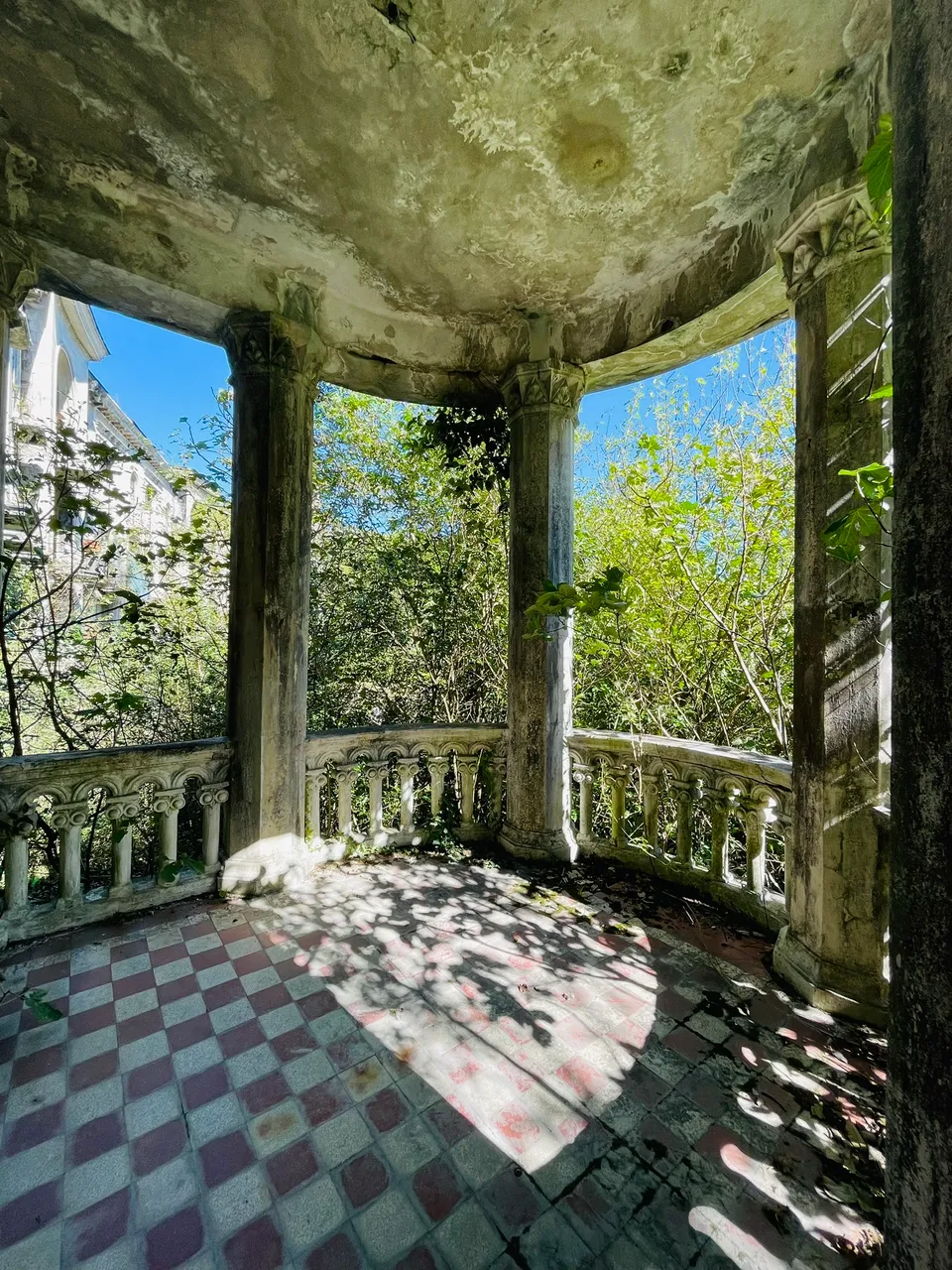
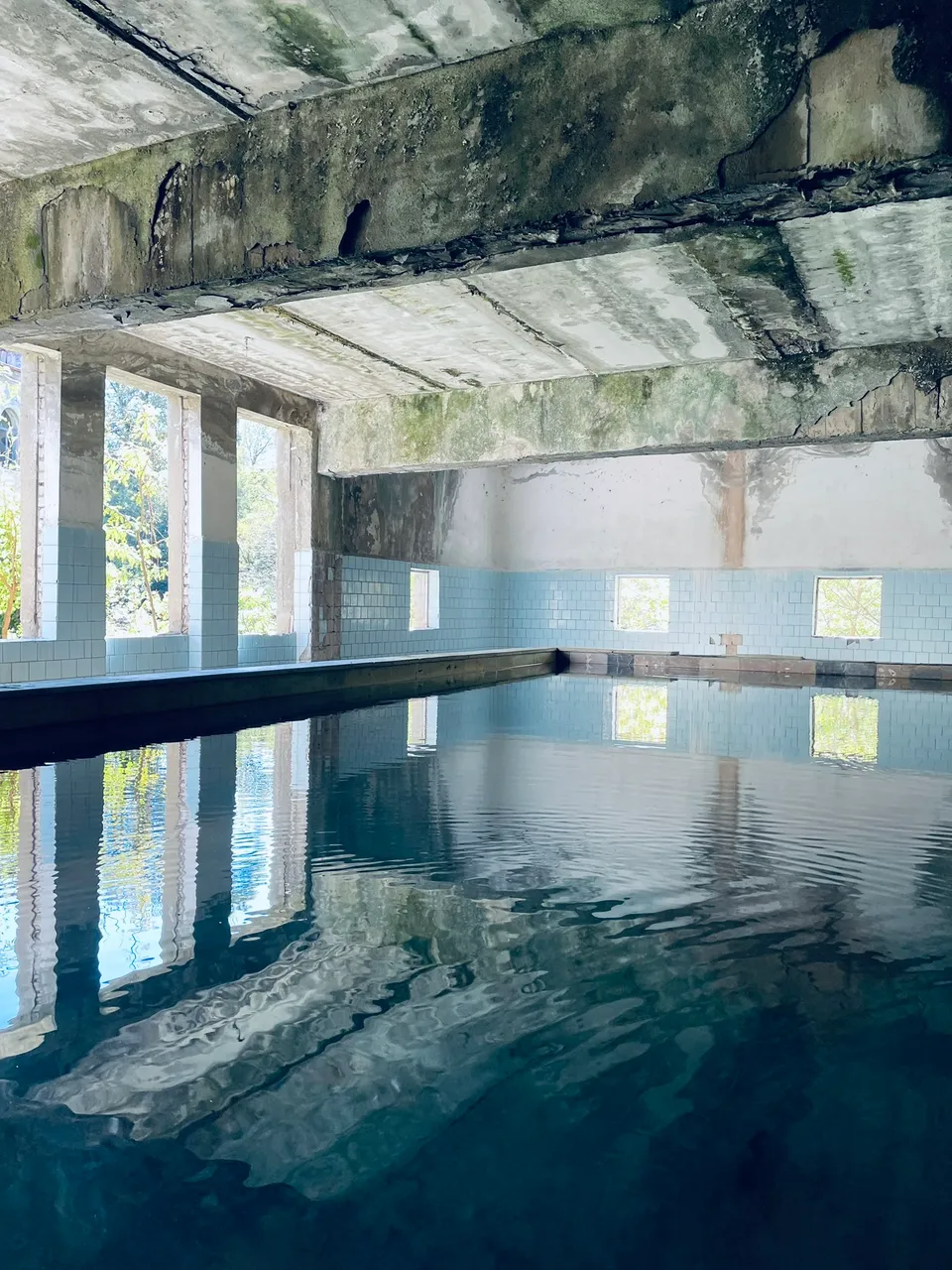
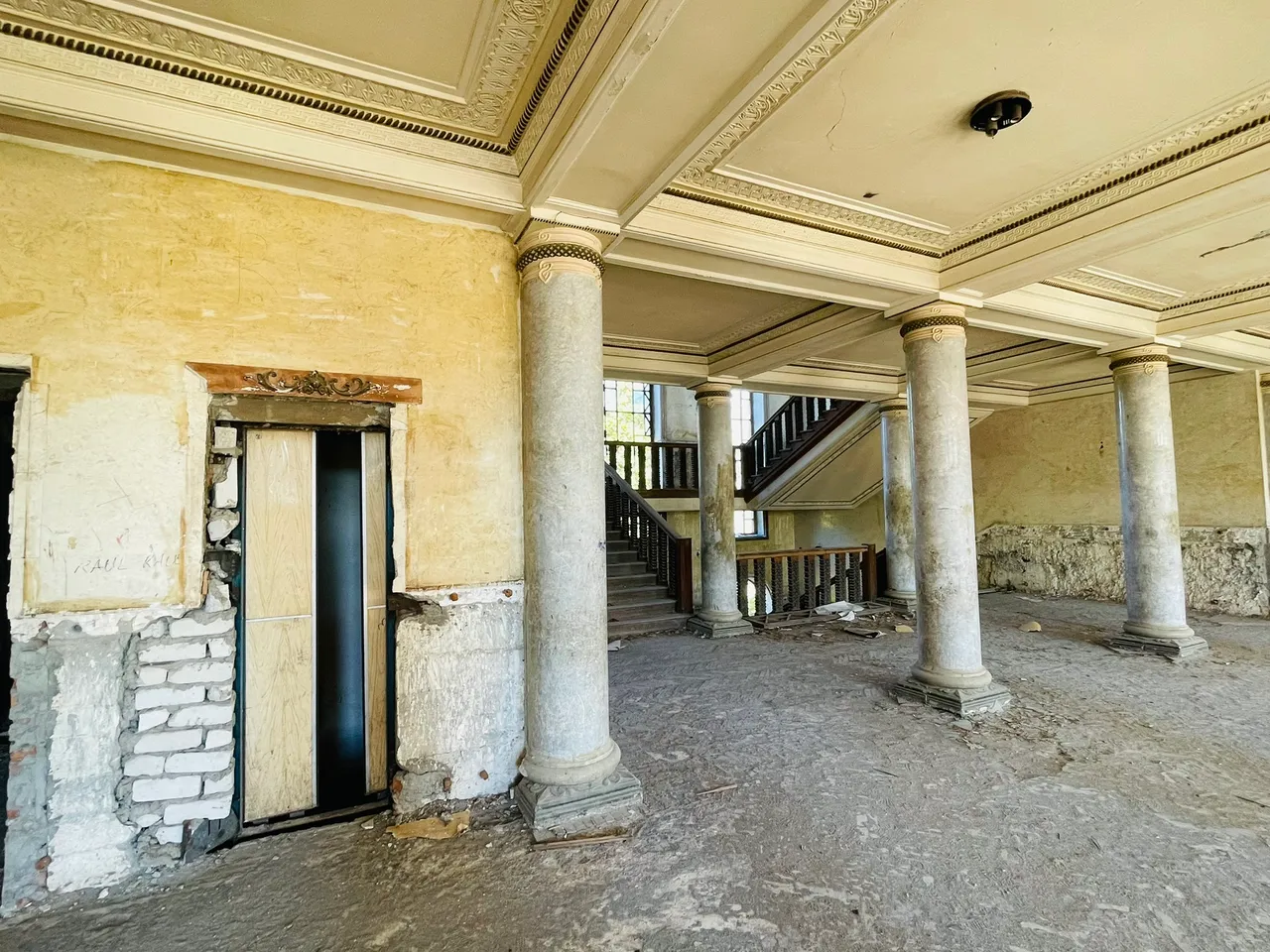
At the Bottom of the Ocean
With a small group, I moved silently from one abandoned sanatorium to another, feeling a deep sense of loss as I imagined how many life stories these walls had witnessed. At one moment, I felt as if I was not looking at the ruins of sanatorium but at the remains of the Titanic at the bottom of the ocean. The salty waters managed to destroy most of the luxury, but traces of it still remain. 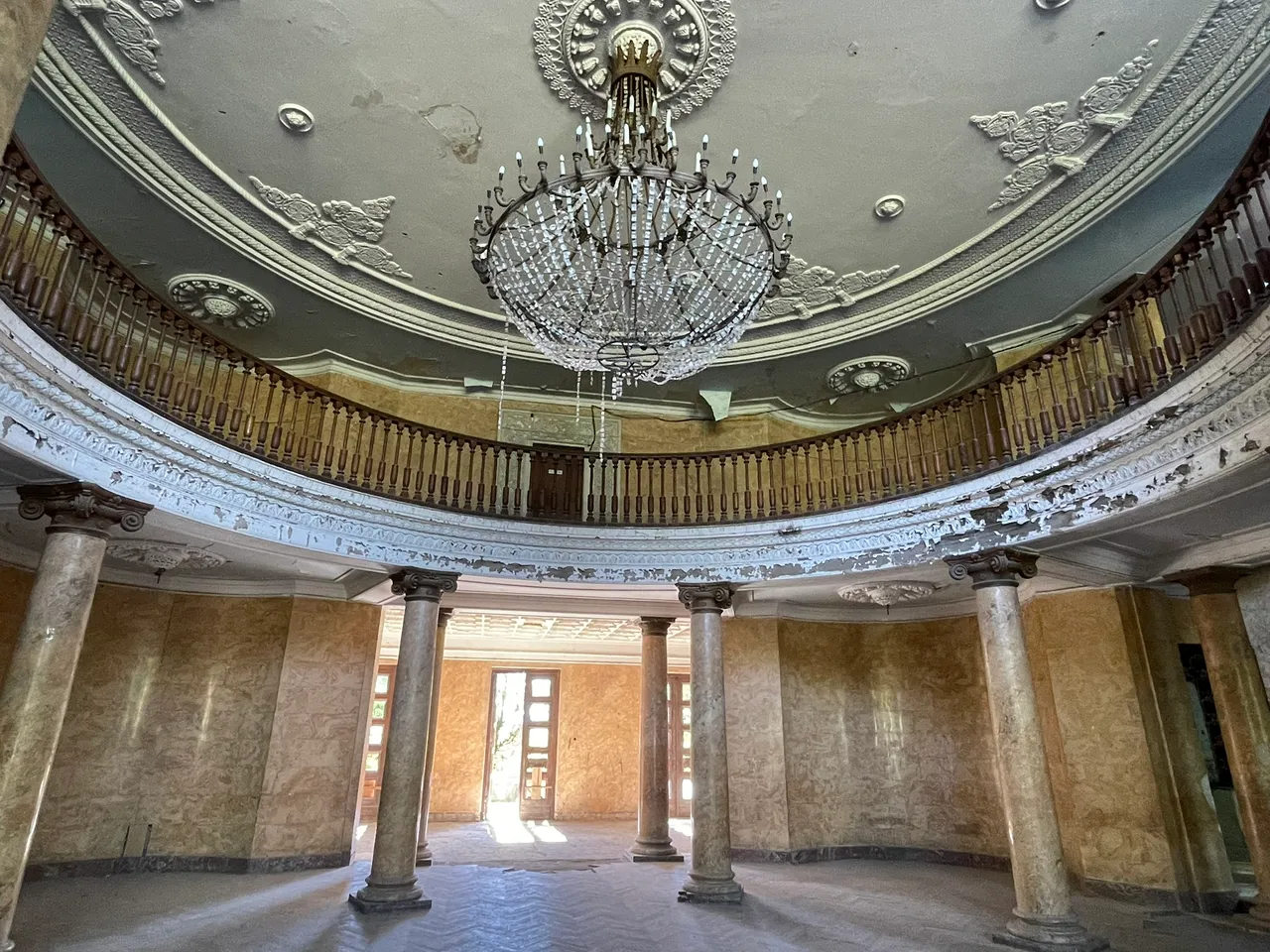
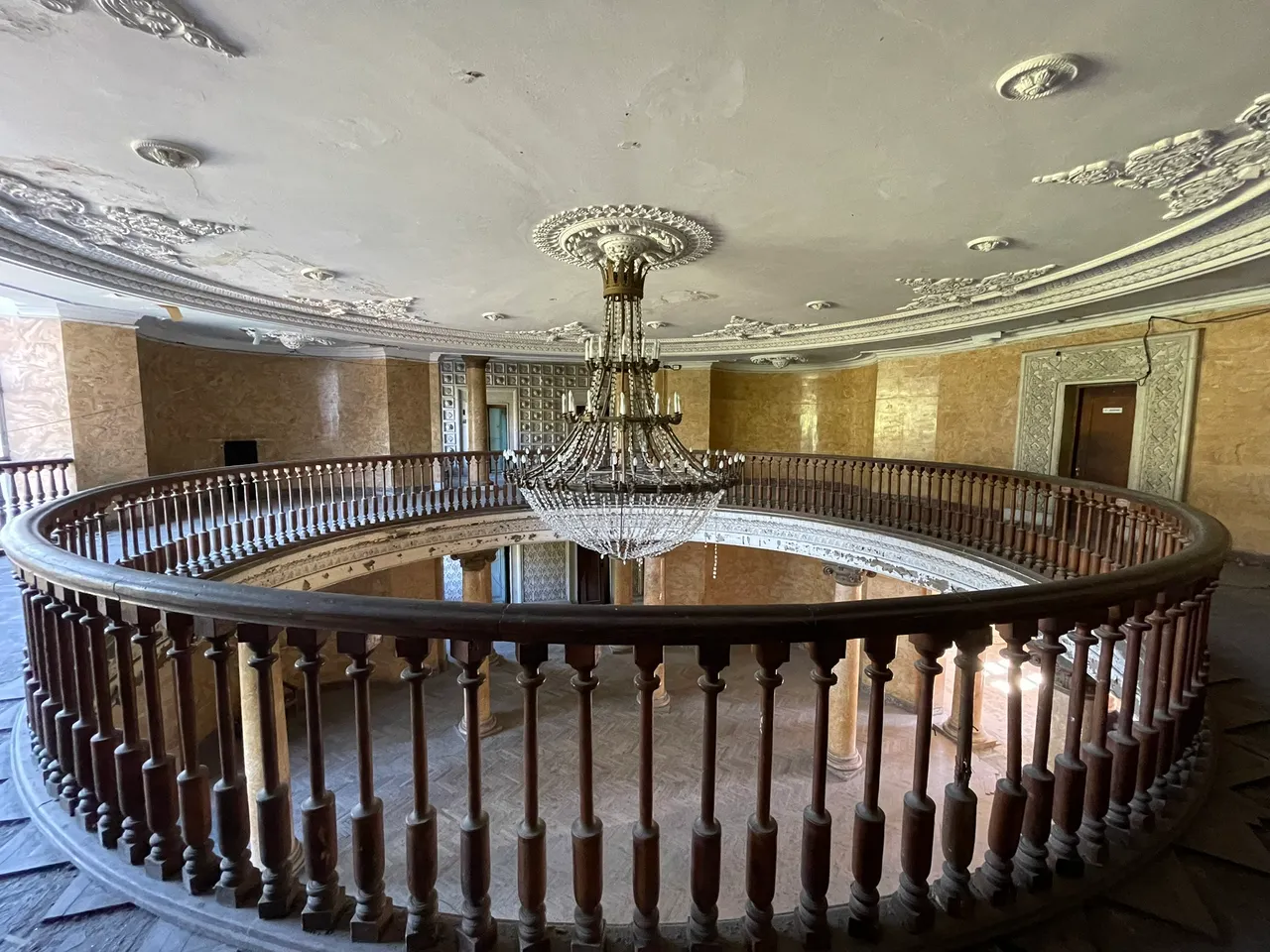
 But the bigger shock was still to come. At one point, we saw balconies where laundry was hanging out to dry, and it didn’t look old. It turned out that IDPs lived here until 2021 (meaning for 30 years!), and some families continue to live here till now! The majority though moved to apartments built for IDPs by the state between 2010 and 2021. Imagining that an entire generation was born and raised here left our small group of explorers in deep silence.
But the bigger shock was still to come. At one point, we saw balconies where laundry was hanging out to dry, and it didn’t look old. It turned out that IDPs lived here until 2021 (meaning for 30 years!), and some families continue to live here till now! The majority though moved to apartments built for IDPs by the state between 2010 and 2021. Imagining that an entire generation was born and raised here left our small group of explorers in deep silence.
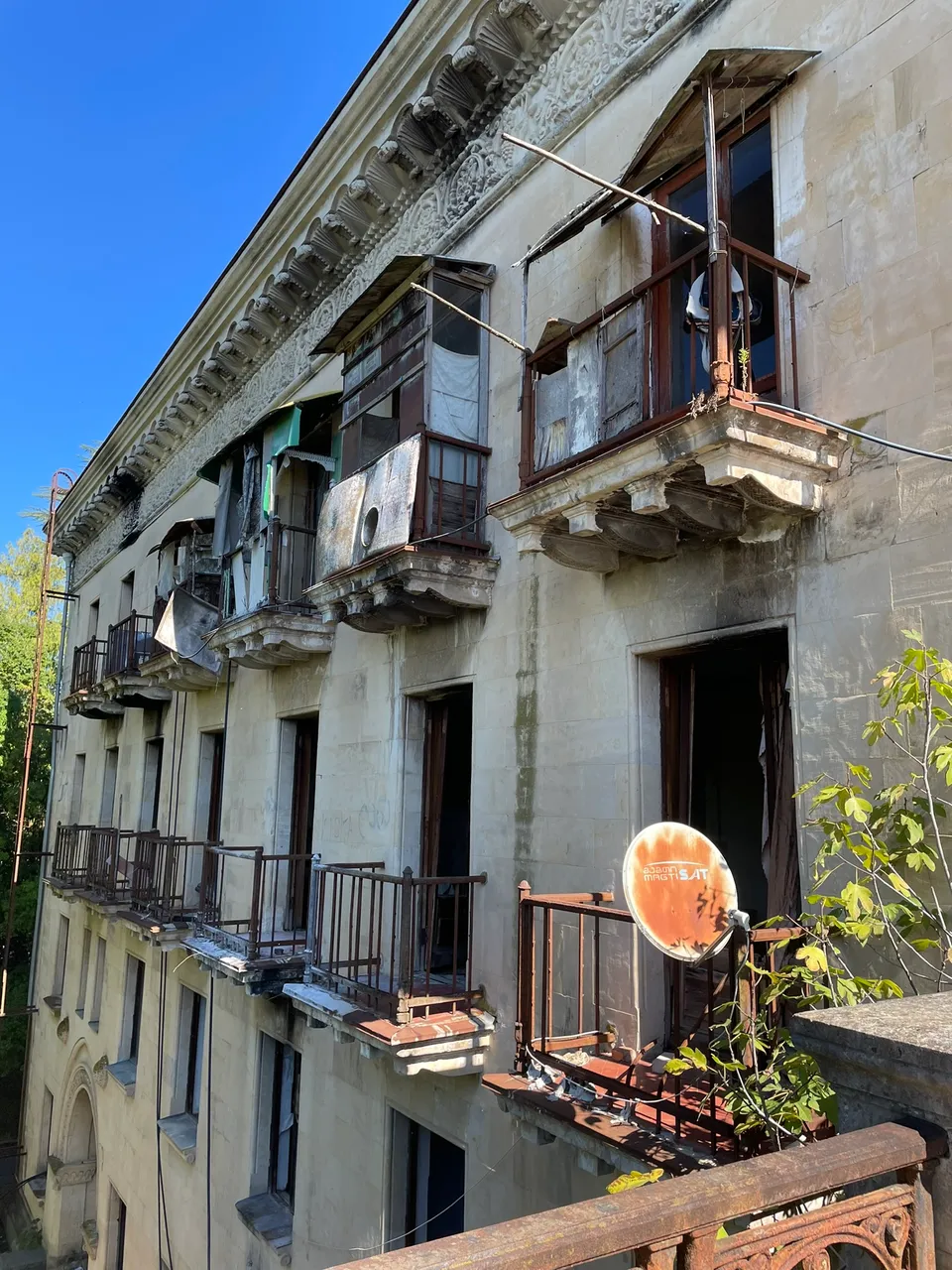
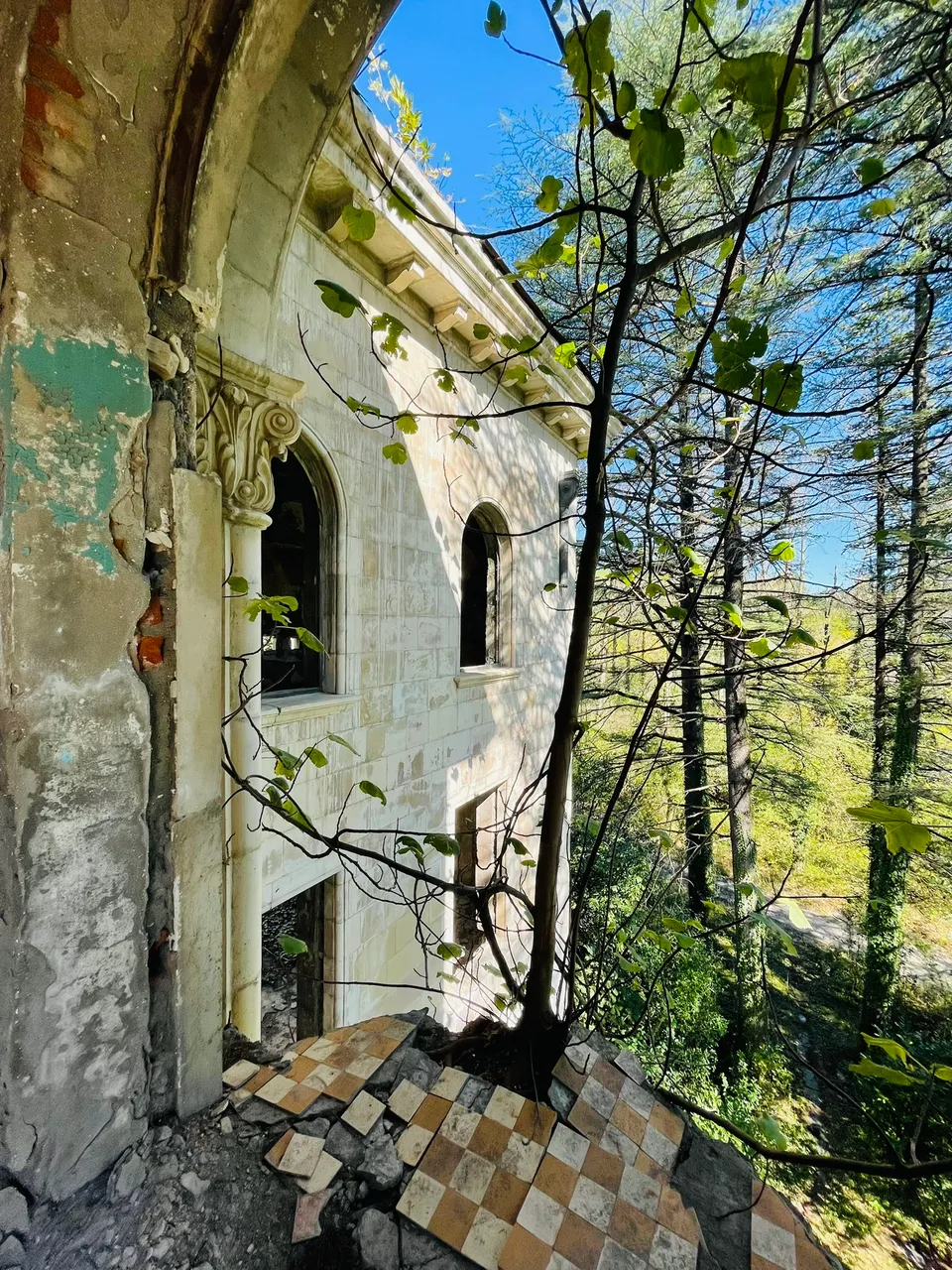
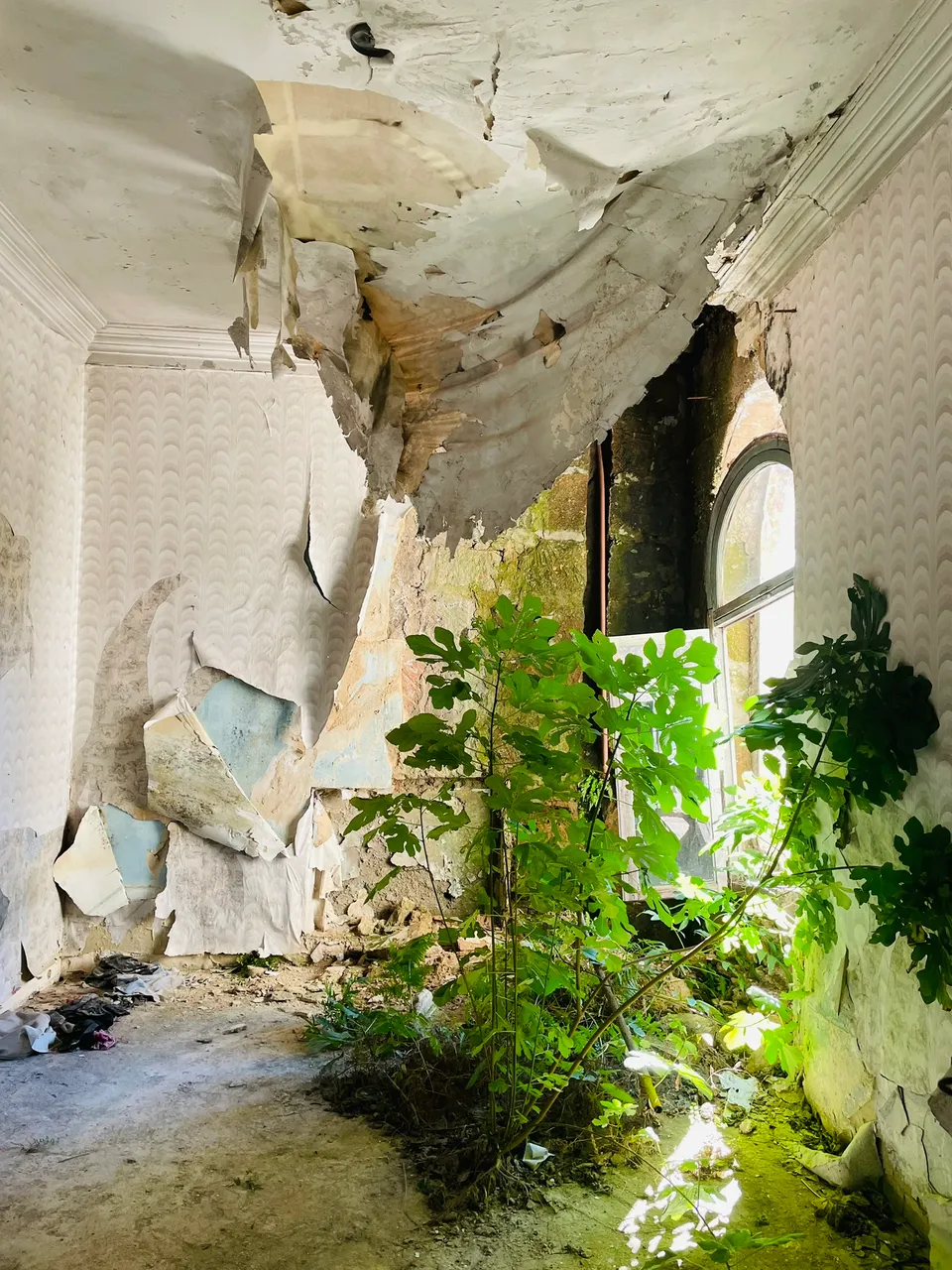 I was looking at these empty rooms with a hope that those people finally moved to better places and managed to start a new better life. I was also thinking about IDPs in my own country, in Ukraine, that keep fleeing from their homes right now, in 2024; and connecting these dots in the history of modern Georgia and Ukraine were quite heartbreaking.
I was looking at these empty rooms with a hope that those people finally moved to better places and managed to start a new better life. I was also thinking about IDPs in my own country, in Ukraine, that keep fleeing from their homes right now, in 2024; and connecting these dots in the history of modern Georgia and Ukraine were quite heartbreaking. 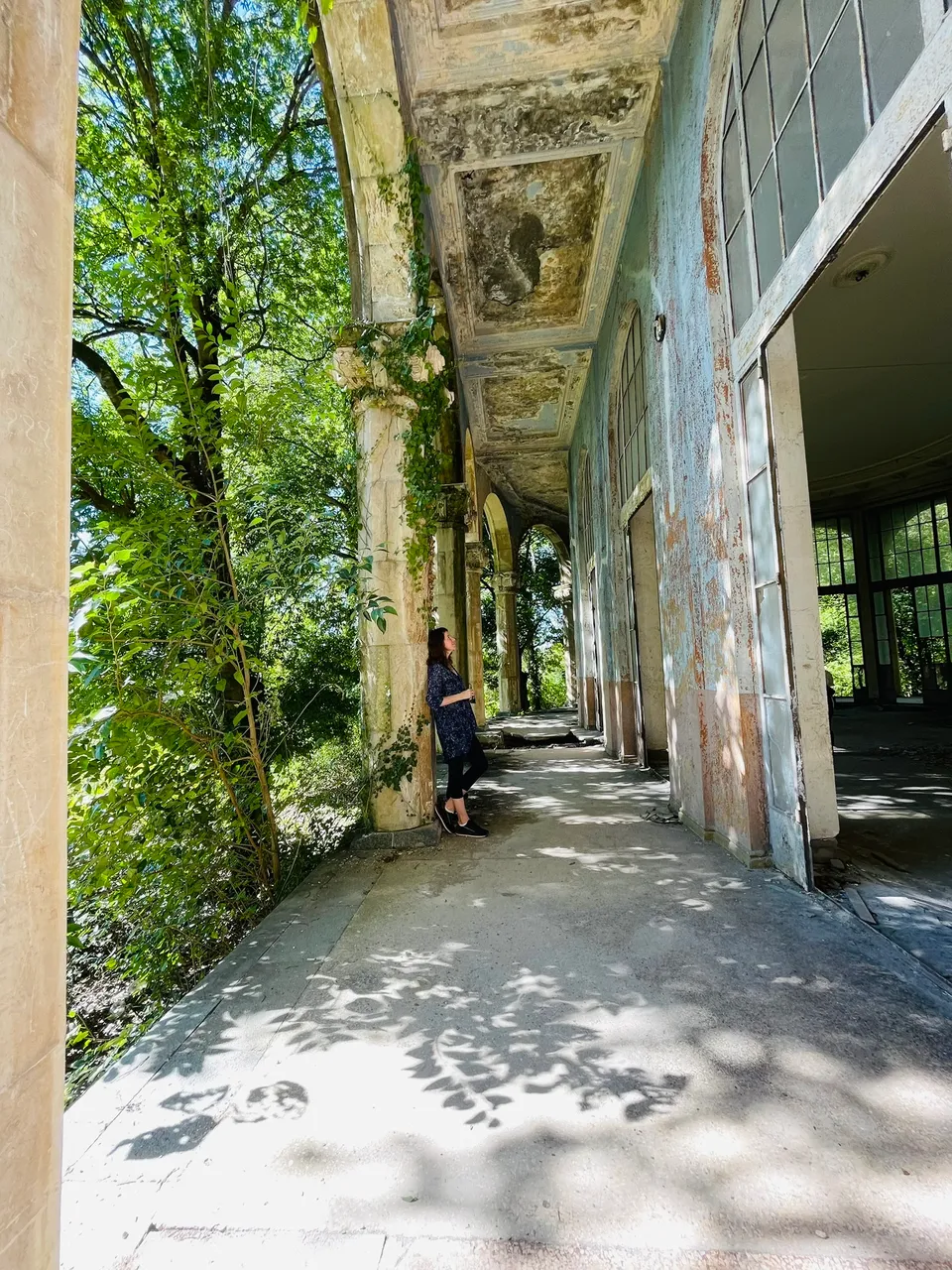 In my photos, you can see how some parts of buildings and rooms remain almost untouched, proudly holding onto the remnants of their former glory. Meanwhile, other buildings and spaces have become nearly natural greenhouses, with numerous plants growing through tiles and parquet, rapidly erasing the memory of past luxury.
In my photos, you can see how some parts of buildings and rooms remain almost untouched, proudly holding onto the remnants of their former glory. Meanwhile, other buildings and spaces have become nearly natural greenhouses, with numerous plants growing through tiles and parquet, rapidly erasing the memory of past luxury. 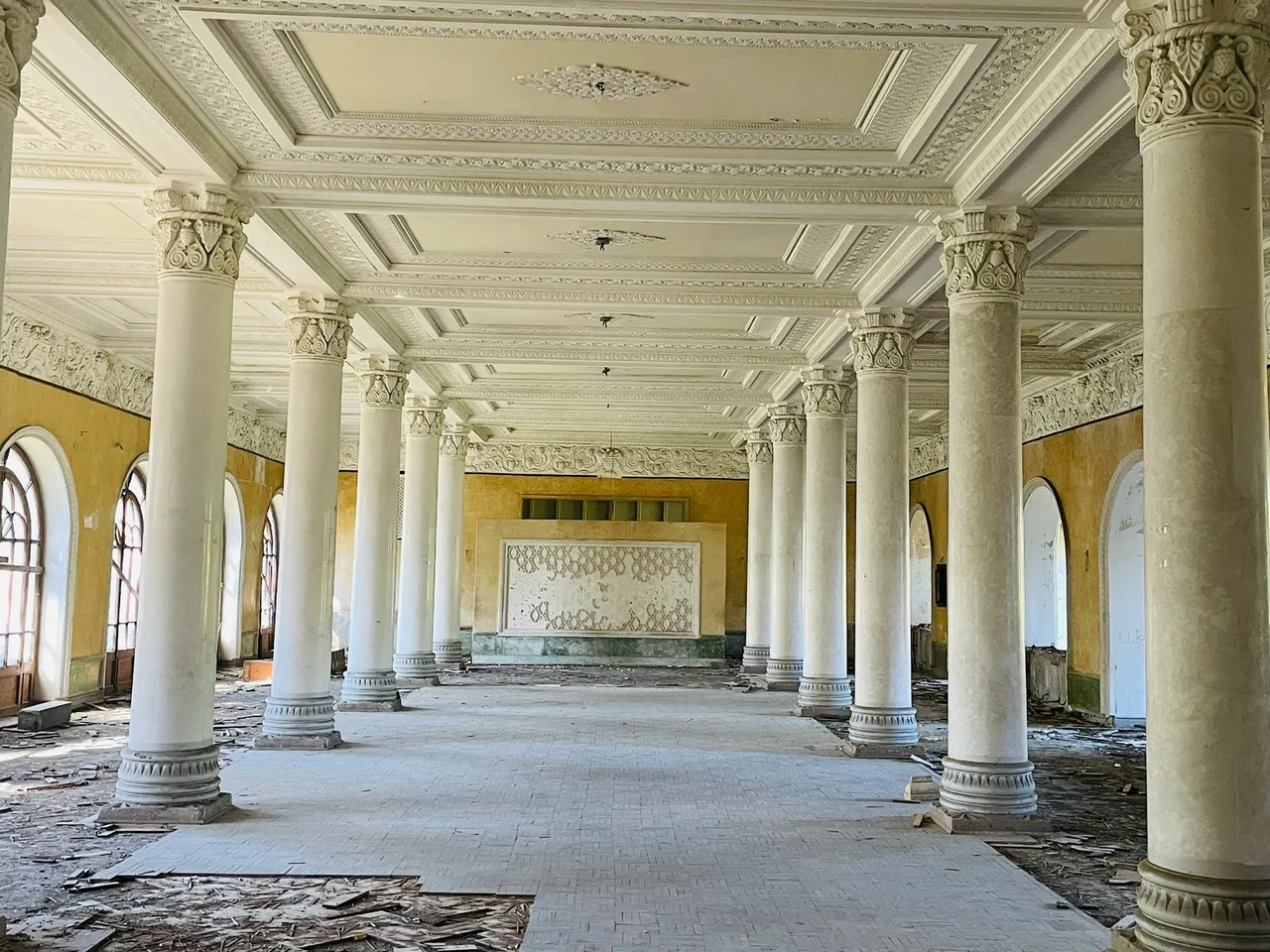
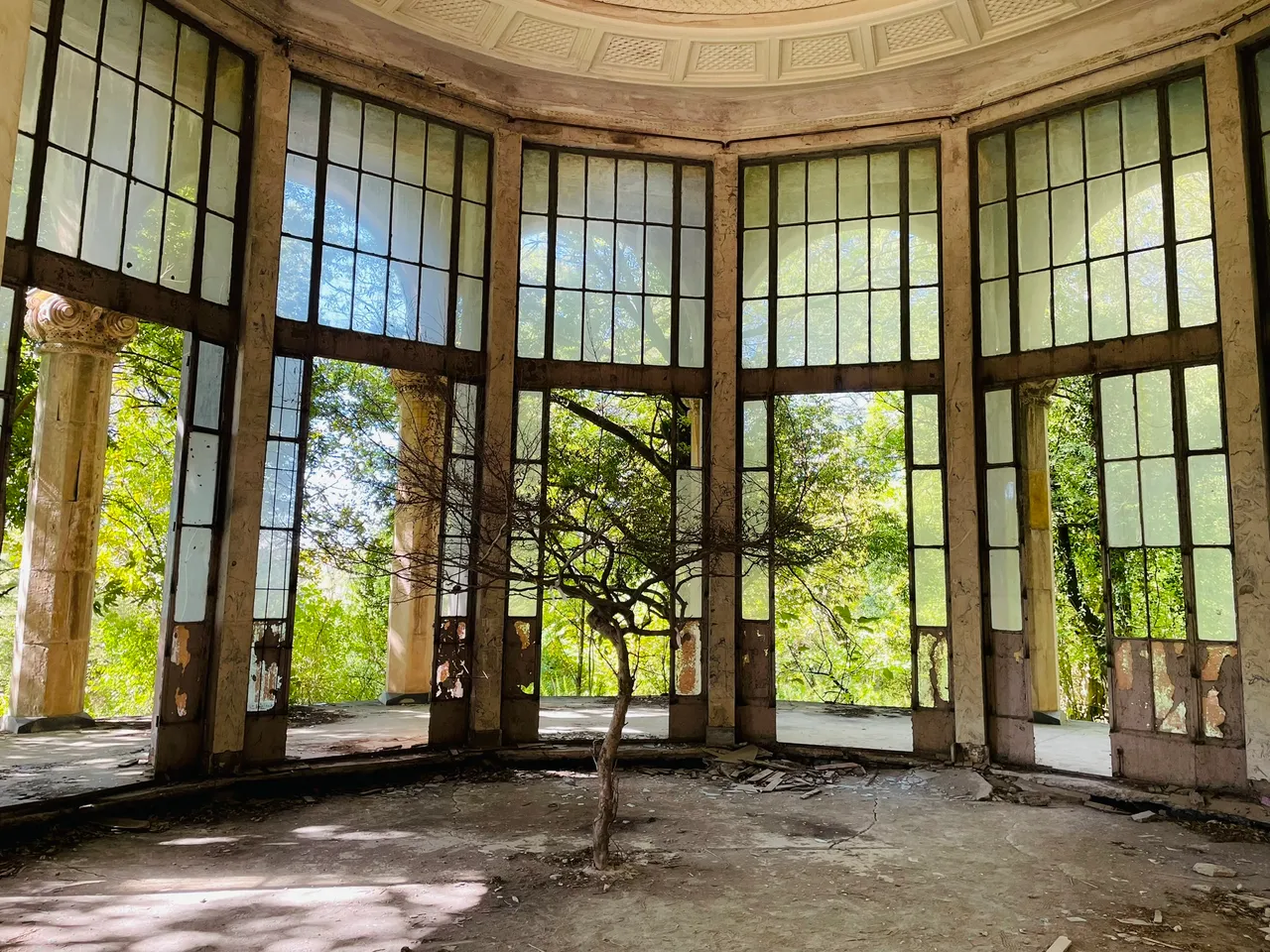
New Chapter of the Georgian Baden-Baden
To avoid ending on a very sad note, I want to mention that several old sanatoriums have been sold out at auctions, and renovations have already started. This means that those grandiose buildings will get a second life and hopefully attract new waves of visitors from around the world.
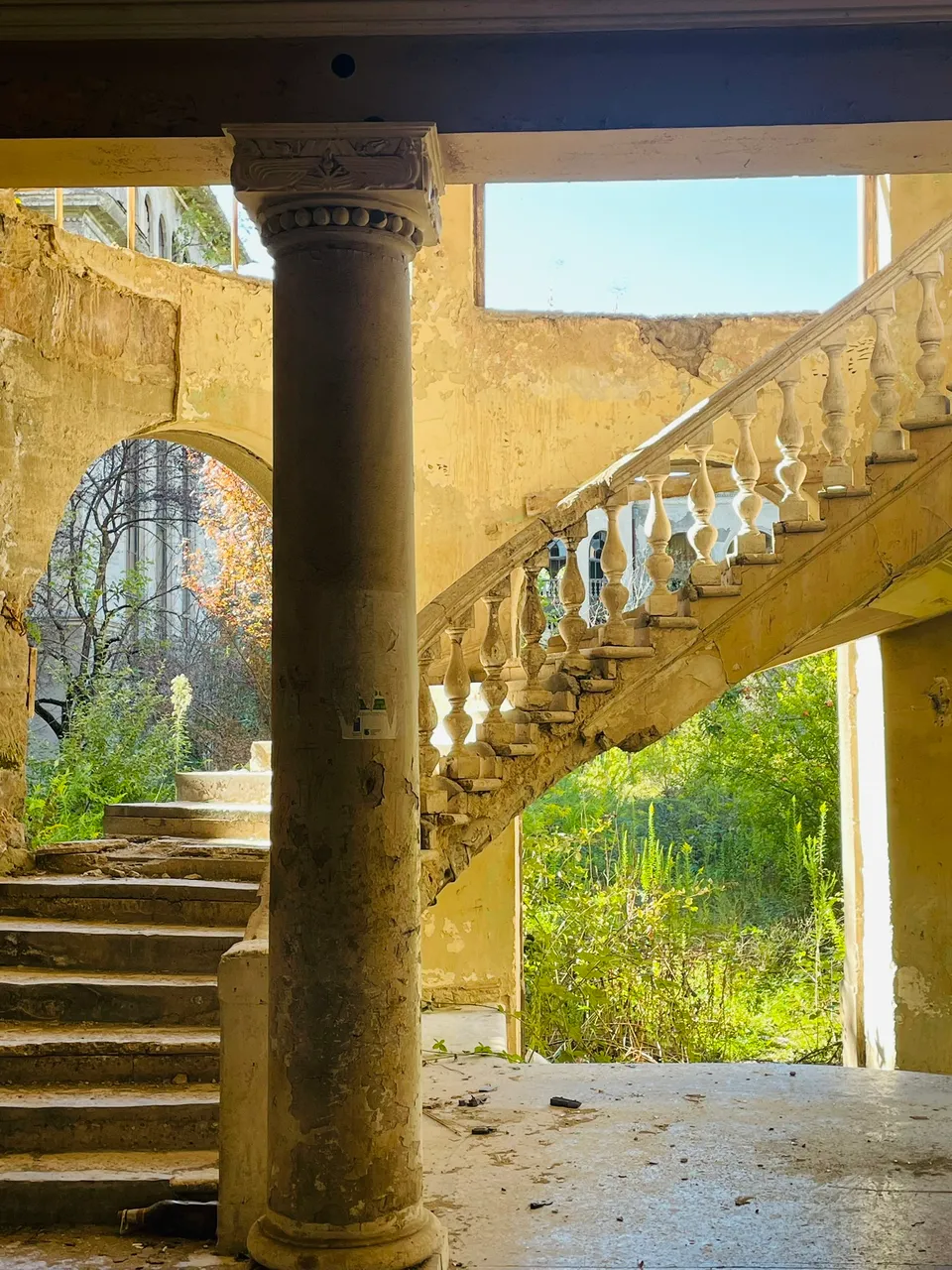 I also saw several hot water bathhouses that have been fully renovated and operational, crowded with people who love spring water treatments. So, I would say that the new chapter of Tskaltubo’s history has begun, it is rising like a phoenix from the ashes, and it looks very promising.
I also saw several hot water bathhouses that have been fully renovated and operational, crowded with people who love spring water treatments. So, I would say that the new chapter of Tskaltubo’s history has begun, it is rising like a phoenix from the ashes, and it looks very promising. 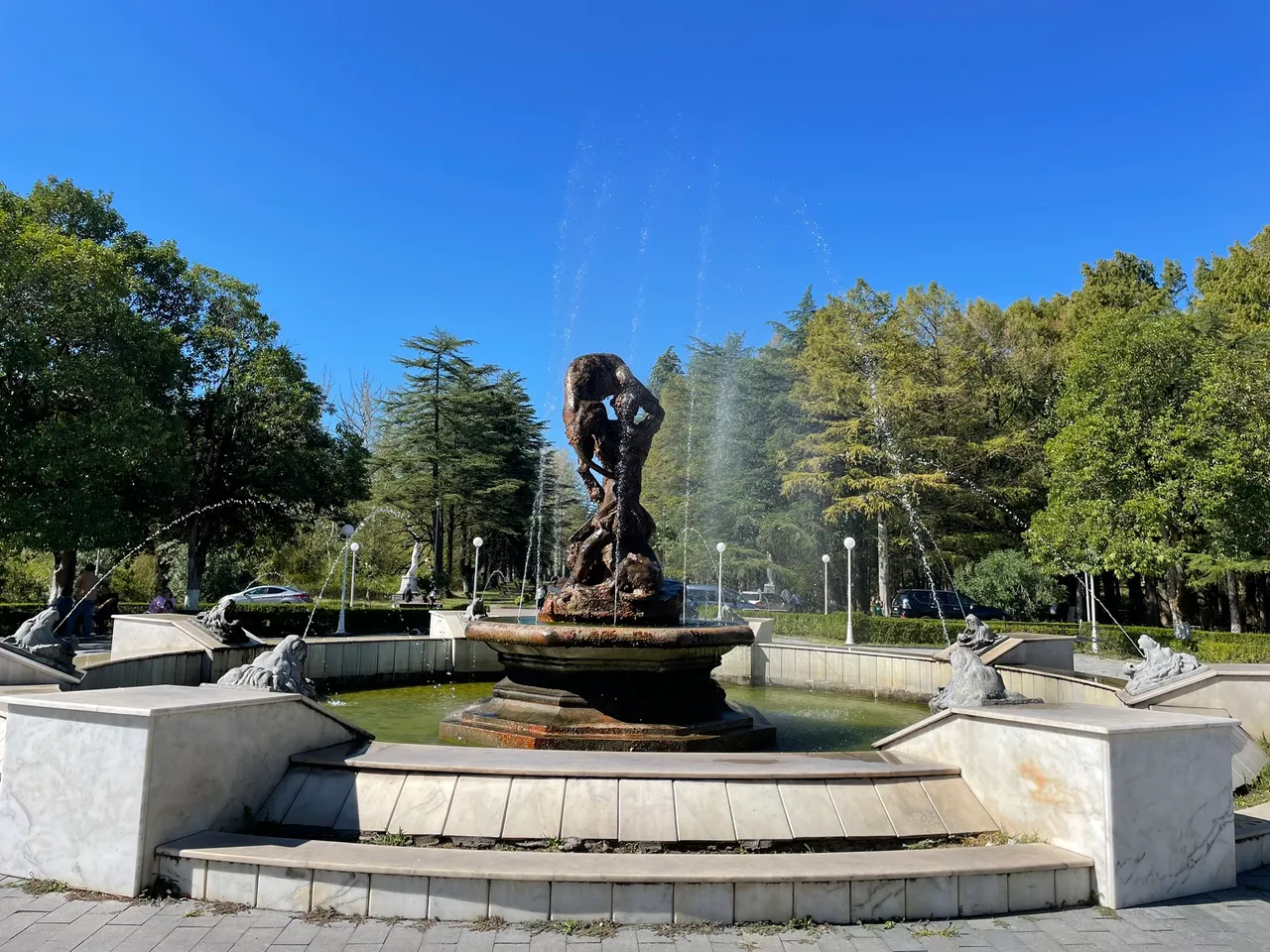
Instead of P.S.
Tskaltubo’s journey—from a luxurious Soviet spa town to a shelter for refugees, and now toward rebirth — is a powerful reminder of resilience. Even when history leaves ruins, life finds a way to continue. I hope the town’s transformation will serve as an inspiration for many of us, reminding that even after the darkest times, renewal is always possible.
Thanks a lot for reading!
P.S. The photos and the text are genuinely mine, I included most of facts of what I’ve heard from our guide during the tour + verified with Google as much as I could